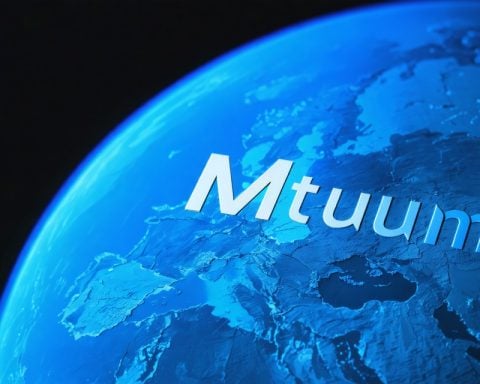- The NVS-02 satellite did not reach its intended orbit, impacting its advanced navigation capabilities.
- ISRO is exploring alternative strategies to utilize the satellite despite its current elliptical orbit.
- Efforts are being made to ensure the substantial financial investment in the satellite is not wasted.
- ISRO plans to launch two additional satellites to enhance the NavIC system, which comprises seven satellites for regional navigation.
- The NVS-01 satellite, launched in May 2023, supports the advancement of India’s navigation technologies.
- Creative engineering solutions may lead to innovative advancements in navigation services.
In a surprising twist, ISRO’s latest satellite, the NVS-02, has failed to achieve its intended orbit, stalling the full potential of its cutting-edge technology. This setback not only represents a significant financial investment but also strains hopes for the satellite’s advanced navigation payloads and atomic clocks that promise precision in positioning.
However, all is not lost! ISRO is actively seeking alternative strategies to salvage the NVS-02 satellite. Currently residing in an elliptical orbit, the agency is innovating ways to utilize the satellite for navigation services, ensuring that the mammoth investment does not go to waste. The focus remains on maximizing its capabilities despite the challenges.
Meanwhile, ISRO is gearing up for an ambitious rollout of two additional satellites to bolster the NavIC system, solidifying India’s regional navigation prowess. The NavIC, a sophisticated constellation of seven satellites, is designed to offer accurate positioning and timing services across India and adjacent areas.
The NVS-01, launched earlier in May 2023, was a beacon for this second generation of navigation satellites. With enhanced features aimed at elevating the NavIC system, both NVS satellites are pivotal for advancing India’s navigation capabilities.
As ISRO engineers explore creative solutions to work around the elliptical orbit challenge, the road ahead might just lead to unexpected innovative breakthroughs. Stay tuned for the latest updates on how ISRO plans to turn this challenge into an opportunity!
Breaking News: ISRO’s NVS-02 Satellite Crisis Sparks Innovative Solutions!
The Current Situation of NVS-02 and Future Prospects
In a recent development, ISRO’s NVS-02 satellite, intended to enhance India’s regional navigation capabilities, has not successfully reached its designated orbit. This incident raises concerns about the advanced navigation payloads and atomic clocks that the satellite was supposed to deploy for enhanced precision in positioning, potentially impacting the effectiveness of the NavIC system.
Despite the setback, ISRO is actively exploring alternative strategies to optimize the operational use of NVS-02. Although currently in an elliptical orbit, engineers are confident in devising methods to utilize the satellite’s technology effectively, ensuring that the significant financial investment does not go to waste.
Features and Innovations of the NVS Satellites
1. Advanced Navigation Systems: The NVS satellites, including NVS-01 and NVS-02, are designed to provide precise satellite navigation services using cutting-edge technology. This includes enhanced signal strength and improved coverage areas.
2. Atomic Clocks: One of the vital features of the NVS satellites is their advanced atomic clocks, which promise a new level of accuracy in location tracking, essential for various applications ranging from civilian use to strategic defense mechanisms.
3. Future Launches: ISRO sets its sights on launching two additional satellites to enhance the NavIC constellation. This expansion aims to fortify India’s position as a leader in satellite navigation within the region.
Market Forecasts and Trends
1. Growing Demand for Navigation Technology: As technology evolves, the demand for precise navigation systems is skyrocketing, particularly in areas like autonomous vehicles, logistics, and mobile applications.
2. Impact of Setbacks on ISRO’s Reputation: While challenges regarding NVS-02 exist, ISRO’s proactive approach towards problem-solving may enhance its reputation as a resilient organization capable of turning failures into opportunities.
3. Investment in Space Technology: Investments in satellite technology are on the rise, with governments and private enterprises increasingly recognizing the value of reliable navigation systems as essential infrastructure.
Related Questions
1. What are the potential impacts of the NVS-02 satellite’s failure?
The failure to reach the intended orbit may delay the deployment of advanced navigation services that rely on the satellite’s payloads. However, ISRO’s commitment to finding alternative solutions could mitigate some of these impacts.
2. How does the NVS system improve navigation services in India?
The NavIC system, powered by the NVS satellites, offers improved accuracy and reliability over traditional GPS services, particularly in India’s unique geographic and demographic context.
3. What is the expected timeline for the launch of the additional satellites?
While specific timelines for additional satellite launches have not been disclosed, ISRO typically aims for strategic launches within a year or two, contingent on the success of preparatory missions.
For more information on ISRO’s initiatives and updates, feel free to explore their official page: ISRO.









